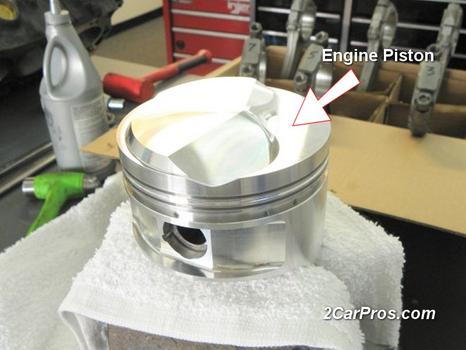Piston Ring Replacement
Step by step guide on how to install piston rings once the piston has been removed from an automotive engine.

New Engine Piston

New Piston Rings with Rod Bearings
Step 3 - Always install piston rings at their proper orientation, this helps provide a superior seal to the cylinder walls.

Piston Ring Installation Orientation Guide

Installing Piston Oil Separator Ring

Installed Piston Oil Separator Ring

Oil Wiper Ring Installation

Completed Piston Oil Ring Set

Installing Second Piston Ring
 Installation of the Top Compression Piston Ring
Installation of the Top Compression Piston Ring
Completely Installed Piston Ring Set

Lubricating Engine Piston Rings

Installing Pistons
- Piston ring installation tool
- Protective eye-wear and gloves
- Motor oil
- Shop towels
- Small standard screw driver or pick
- New piston ring set
- Piston rings are a very important part of the engine and should be installed with care and cleanliness.
- Never install new piston rings into worn cylinder walls.
- Keep ring gap in proper locations on the piston
- Never twist compression rings when installing
Commentaires
Enregistrer un commentaire